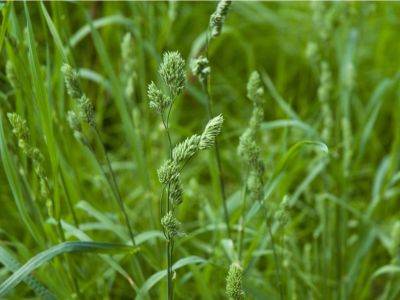What is Orchardgrass?
Orchardgrass uses span more than erosion, fodder, hay, silage, and natural ground cover. It also enhances the nitrogen in soil when planted deep with abundant water. As manure and biosolids, it returns high levels of this necessary macronutrient to the soil. There are a wide variety of orchardgrass growing conditions suitable for this tolerant plant. Orchardgrass is also known as cocksfoot. It is a cool-season, perennial bunching grass. What does orchardgrass look like? This true grass can grow 19 to 47 inches (48.5 to 119.5 cm.) in height with leaf blades up to 8 inches (20.5 cm.) in length. Leaves are broadly tapered to a point and the base is v-shaped. Sheaths and ligules are smooth and membranous. The inflorescence is a panicle up to 6 inches (15 cm.) long with two to five flowered spikelets in dense side clusters. It germinates early in the season and achieves the bulk of its growth in the cooler season.
Orchardgrass Information
Among the better orchardgrass uses is its ability to add nitrogen to the soil. Crucial to farmers regarding this bit of orchardgrass information is that it enhances the soil and nutrient content of hay even more when combined with legumes or alfalfa. If planted alone, the grass is harvested early in the season, but when combined with legumes, it is harvested when the legume is in late bud to early bloom for the most nutritious hay or silage. Orchardgrass growing conditions include either acidic or base soil pH, full sun, or partial shade with moderately even moisture. It is found in disturbed areas, savannas, woodland borders, orchards, pastures, thickets, and fence rows. Provided site conditions are correct, it is easy to establish and durable. The plant even withstands cold winters to -30 F. (-34 C.) if insulated by snow. Grass planted for erosion control is seeded or drilled in late summer to early autumn but that established for forage is planted in late winter to early spring. This provides the more tender shoots with the highest nutrition available for browsing animals. The time for harvesting the plants depends upon the use. Harvest in early to mid-spring for hay. As tillage, it is turned under in late winter. If the grass is to be grazed, grazing can start in early spring until summer but late-season grazing should be discouraged. Leave some of the plants to form mature seed heads and allow them to reseed for a consistent supply of the plants. With careful management, orchardgrass can perform a host of functions while adding nutrients and tilth to soil.
